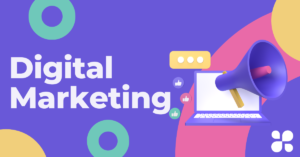Pinterest has evolved far beyond a simple platform for finding recipes and DIY inspiration. With over 400 million monthly active users, Pinterest is a powerful visual discovery tool, helping users find ideas and inspiration on a wide range of topics—from fashion and home decor to travel and digital marketing. It has become a go-to for users seeking new products, lifestyle ideas, and educational content, making it a valuable platform for businesses to showcase their offerings.
In this guide, we’ll cover how Pinterest works, why it’s beneficial for your business, and the strategies you can use to grow your brand on Pinterest.
Why Use Pinterest for Business?
Pinterest is unique compared to other social media platforms because it’s often used as a visual search engine. Users come to Pinterest with a discovery mindset, seeking out ideas, inspiration, and products to improve their lives. Here’s why Pinterest can benefit your business:
1. Longer Content Lifespan
Unlike social media posts on other platforms, Pinterest pins have a long lifespan. Content on Pinterest can continue to generate views, clicks, and saves for months or even years after being posted.
2. Higher Conversion Rates
Pinterest users often have a higher intent to purchase than users on other platforms, as they actively search for ideas and products they want to buy. This makes it ideal for eCommerce and brands looking to drive traffic and conversions.
3. Increase Brand Exposure
Pinterest helps brands reach new audiences who are in discovery mode. Every pin you post has the potential to introduce your brand to new users and expand your reach.
4. Boost Organic Traffic
Pinterest can drive significant traffic to your website. When users click on a pin, they’re taken directly to your website, blog, or eCommerce page, making it a valuable traffic source.
Getting Started with Pinterest Marketing
Step 1: Set Up a Pinterest Business Account
To maximize the benefits of Pinterest for your brand, start by setting up a Pinterest Business Account. A business account provides access to Pinterest Analytics and enables you to run ads and promoted pins, which can help increase your brand’s visibility.
To set up a business account:
1. Go to Pinterest for Business and sign up for an account.
2. Enter your business details and choose a unique username that represents your brand.
3. Add your website, profile picture, and a short bio that explains what your brand offers.
Step 2: Optimize Your Pinterest Profile
A well-optimized Pinterest profile makes it easier for users to find and engage with your content.
– Profile Name and Bio: Include relevant keywords in your profile name and bio to improve searchability. For example, if you run a skincare brand, use keywords like “Organic Skincare” or “Natural Beauty Products.”
– Website Verification: Verify your website on Pinterest to access analytics and boost credibility.
– Create a Content Strategy: Decide what topics, themes, and products you’ll pin about. Make sure these topics align with your brand and are of interest to your target audience.
Step 3: Create Boards and Organize Pins
Boards are collections of pins, and they should be organized based on topics that your audience is interested in. Create boards that reflect the products or services you offer, along with other relevant content that aligns with your brand.
Tips for Creating Boards:- Use Keywords in Board Titles and Descriptions: Keywords improve searchability. For example, instead of “Our Favorites,” try “Healthy Recipes for Busy Days” or “Minimalist Home Decor.”
– Add Descriptive Text: Write clear descriptions for each board. Include relevant keywords to help Pinterest understand the context of your board.
– Create Seasonal Boards: Boards for specific seasons, holidays, or trends can be great for attracting timely traffic. For instance, create boards like “Summer Outfit Inspiration” or “Holiday Gift Guide” to attract seasonal engagement.
Step 4: Design Eye-Catching Pins
Pinterest is highly visual, so creating attractive, high-quality images is essential to standing out. Each pin should include a high-quality image, compelling text overlay, and your logo.
Best Practices for Pinterest Pin Design:
– Use Vertical Images: Pinterest favors a 2:3 aspect ratio (1000 x 1500 pixels) for images, as vertical images perform better in the feed.
– Add Text Overlays: Adding text overlays can help explain what the pin is about, especially for blog posts, guides, or product features.
– Branding: Add your logo or website URL subtly to each pin, so users know it’s from your brand.
– Use Bright, Eye-Catching Colors: Pins with warm, bright colors tend to attract more attention in the feed.
Step 5: Utilize SEO on Pinterest
Pinterest is both a social media platform and a search engine, which means SEO (Search Engine Optimization) is essential for your pins to be discovered.
Pinterest SEO Tips:
– Keywords in Pin Descriptions: Write descriptions for each pin that include relevant keywords and hashtags.
– Use Alt Text: When uploading images, add alt text that describes the content of the pin using keywords.
– Keyword-Rich Titles: Include relevant keywords in pin titles to increase their chances of appearing in search results.
The more optimized your pins are, the easier it will be for users to find them when searching for related topics.
Step 6: Consistent Pinning
Consistency is key on Pinterest. Pinterest recommends pinning frequently rather than posting everything at once.
Tips for Consistent Pinning:
– Pin Daily: Pinterest’s algorithm favors accounts that pin consistently, even if it’s just a few pins per day.
– Use a Scheduling Tool: Tools like Tailwind allow you to schedule pins in advance, making it easy to keep your profile active.
– Repin Content: In addition to pinning your own content, repin relevant content from others to keep your profile fresh and engaging.
Step 7: Track Performance with Pinterest Analytics
Pinterest’s built-in analytics tool provides insights into your audience’s behavior, allowing you to refine your strategy based on what’s working. Pinterest Analytics includes metrics such as:
– Impressions: How often your pins appear in users’ feeds.
– Engagements: The total number of engagements (clicks, saves) on your pins.
– Top Performing Pins: See which pins have the highest engagement and use this data to shape your future content.
By monitoring these metrics, you can optimize your strategy to align with audience interests and preferences.
Advanced Pinterest Marketing Strategies
1. Create Idea Pins
Idea Pins (formerly known as Story Pins) allow you to create multi-page, interactive content. These pins stay on your profile and are great for tutorials, product showcases, or behind-the-scenes content.
2. Use Rich Pins
Rich Pins automatically sync data from your website and display additional information, such as product prices, availability, and descriptions. This makes them highly engaging for eCommerce brands.
3. Promoted Pins
If you’re looking to expand your reach quickly, consider using Pinterest’s paid ads platform. Promoted Pins appear in search results and users’ home feeds, helping you reach a wider audience and attract new followers.
4. Collaborate with Influencers
Pinterest influencer marketing is a growing trend. Partnering with influencers who have a strong following on Pinterest can help amplify your reach and attract engaged followers.
Final Thoughts
Pinterest is an incredibly versatile platform that can help brands reach a new audience, drive traffic, and increase conversions. By creating visually appealing, keyword-optimized content and posting consistently, you can leverage Pinterest to grow your brand and engage potential customers.
Whether you’re a small business, eCommerce brand, or content creator, Pinterest marketing can be a valuable addition to your digital strategy. Start with these tips, experiment with different pin types, and make adjustments based on what resonates with your audience. With patience and creativity, Pinterest can become a key platform for achieving your business goals.




